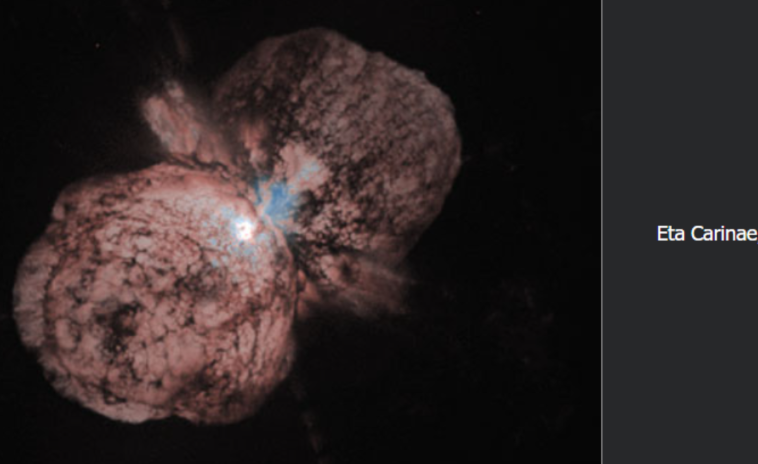Hubble is still solving space old mysteries

In a picture taken by the Hubble telescope in 1994, two huge polar bubbles can be seen that were released by the star 150 years earlier.
These bubbles testify to the astonishing power of Eta Karine. Each of those two bubbles is hundreds of times larger than the Solar System, and the ejected material is expanding at a speed of 2.4 million kilometers per hour.
Some saw the figure of a stocky man in the shape of these two bubbles, and that’s why this nebulous creation got the Latin name Homunculus (little man).
There are disagreements about the origin of Homonculus because some astronomers believe that it is not a direct consequence of the hanging outflow from Eta Karina itself. At the beginning of this century, astronomers speculated on the possibility that this star has its own companion.
In order to test this theory, a large observation of Eta Karina was organized in 2003, in which all available large telescopes, both terrestrial and space, were included. Observations in the radio and X-ray part of the spectrum showed brightness oscillations over a period of just over five years, which suggested the existence of a companion orbiting the primary star during that period.

However, confirmation that the companion really exists came in October 2005 from NASA’s UV satellite FUSE. The companion, Eta Karine B, is a smaller but hotter star that orbits the host star in a very eccentric orbit at an average distance of 11 astronomical units.
According to some assumptions, the large outpouring of material from 150 years ago was caused by the rejection of the outer layers of component B.
But despite the existence of a companion, the A component is still one of the most massive stars. Now estimates of its mass range from about 100 to 120 solar masses.
What interests astronomers, and the rest of informed humanity, is what consequences the explosion of Eta Karina will have on us. There are various scenarios. One by one, powerful gamma rays from Eta will wipe out the upper layers of the Earth’s atmosphere, which normally protect us from deadly cosmic rays.
Undoubtedly, this danger exists, but scientists who study this star with less panic claim that it is still too far away to threaten life on Earth.
The supernova flash is too short to have a significant impact on our atmosphere, and the consequences would be felt only by astronauts who are in space at the moment the air from Eta arrives. Some satellites would also suffer some damage.
It remains to be seen whether that will be the case. And let’s hope it doesn’t get worse than that.

